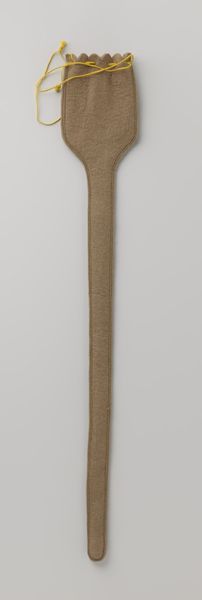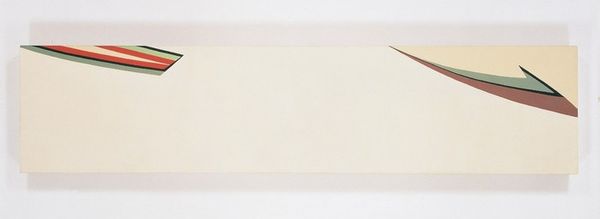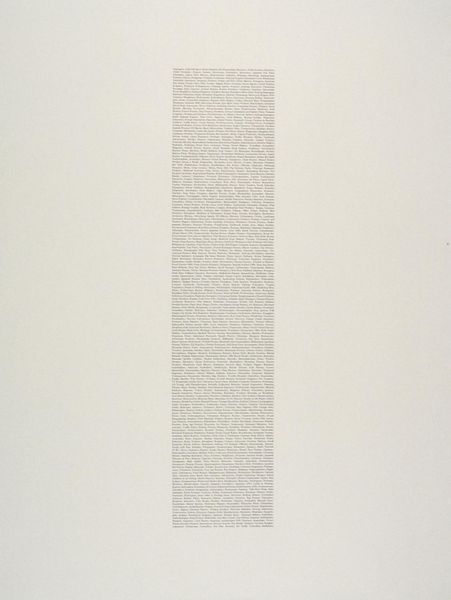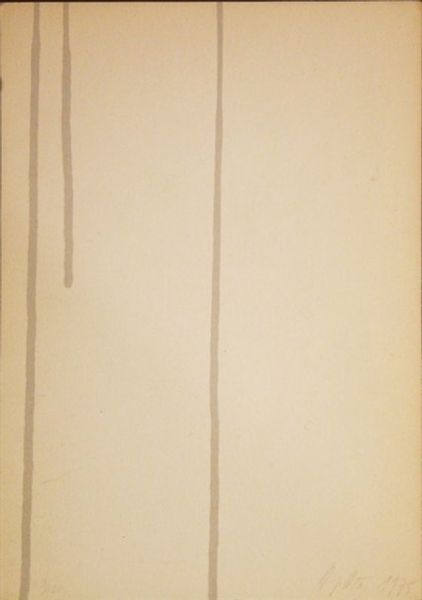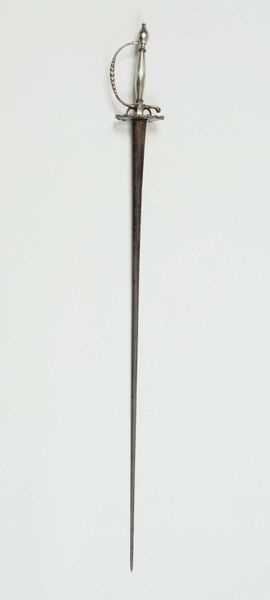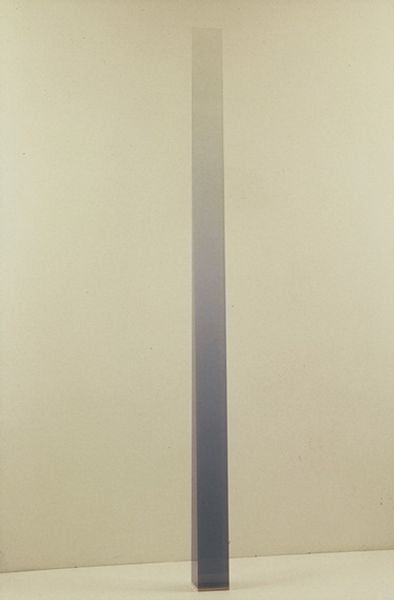
Copyright: Public Domain
Curator: This object is a wedding cravat, crafted around 1875. The design is credited to Keys & Lockwood, and it currently resides in the Metropolitan Museum of Art. Editor: It appears rather unassuming at first glance—a simple, creamy-colored strip of fabric. There's something almost melancholic about its simplicity, juxtaposed against its intended joyous occasion. Curator: Indeed, the cravat’s design reflects a shift in men’s fashion during the late 19th century. These cravats represented formality but also a certain restraint compared to the earlier flamboyant styles. It's textile work representative of a period where sartorial elegance favored subtle embellishments. Editor: Subtleties that reinforced rigid social expectations. The cream color symbolizes purity and commitment. Is this an innocent presentation of what’s to come or the perfect package deal, where the social and economic roles that follow must be considered, making marriage a business contract rather than a sentimental expression of love? Curator: While there's the association with that cultural background and gender roles that existed, I see its presence at a wedding, it might rather convey status through expensive fabrics. The quality of silk alone could communicate wealth. And in that sense, it subtly challenged norms by allowing men a permissible degree of ornamentation in a still somewhat understated manner. Editor: Perhaps, but I would be curious about who chose to incorporate such details and whether those aesthetic choices carried implications of complicity, conformity or subversion, both in presentation of gender norms and their status in the era. This ornamental embroidery hints toward nature. Could this design offer any information on attitudes toward naturalism or gender in 1875? Curator: The floral motif itself could represent a multitude of meanings. On the surface, the wedding element reinforces the idea of renewal and growth, tying neatly into marriage symbolism of two individuals joining and flourishing. Editor: It makes you wonder about the narratives this single accessory silently carried—its relationship to the wearer, the expectations surrounding marriage, and the evolving expressions of masculinity and gender conformity through adornment. Curator: Definitely, understanding the historical context adds depth. Fashion, much like other art forms, can become a visual marker of its time, allowing us a brief insight into the cultural mindset behind even the simplest articles. Editor: Precisely. Examining the tangible markers of intimate and public life opens new paths of thinking about not only art, but human dynamics of both personal expression and the systems in which such choices exist.
Comments
No comments
Be the first to comment and join the conversation on the ultimate creative platform.



